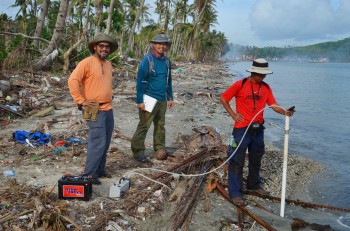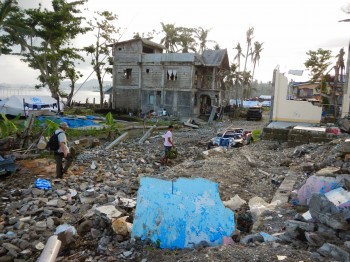Nature’s Fury Fouls Drinking Water
November 2, 2015
Surface & Hydrologic Processes


In research of significance to the world’s expanding coastal populations, scientists have found that geology and infrastructure play key roles in determining whether aquifers that provide drinking water are inundated with seawater during a typhoon or hurricane and how long the contamination lasts.
In 2013, Typhoon Haiyan devastated the Philippines, killing more than 6,000 people and destroying nearly $3 billion worth of property. While the country was in the midst of recovering from the storm, Jackson School of Geosciences scientists conducted research that found that an aquifer on the island of Samar inundated with salt water by the typhoon’s storm surge could remain undrinkable for up to 10 years. In contrast, a second aquifer on the island that was also inundated has recovered much more quickly.
The research was published online April 14, 2015, in the journal Geophysical Research Letters. It focused on aquifers used by the village of San Antonio on the island of Samar.
The difference in recovery time is due to the two aquifers’ surrounding geology, said associate professor Bayani Cardenas, who led the research team. The shallower of the two aquifers is made up of beach sand about 10-15 feet deep, which allows salt water soaked up from the surge to percolate to the water table and move through the aquifer for years to come. In contrast, the other aquifer is largely shielded from seepage because of its depth and possibly an overlying layer of volcanic rock.
The University of Texas at Austin team also included geosciences professor Philip Bennett and graduate students Peter Zamora, Kevin Befus, Matt Kaufman and Aaron Jones. Sponsored in part by the Jackson School’s rapid response program, a fund that supports research in areas recently affected by natural disasters, the researchers arrived in the Philippines two months after the storm struck.
Back to the Newsletter